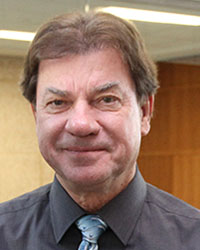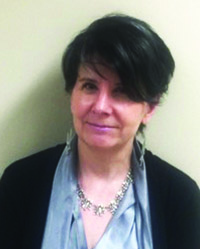Coming out of the dark
Mental illness is on the rise and talking about it is the first step towards effective diagnosis and treatment.
By Dee Hobsbawn-SmithThe forbidden topic
Mental illness was a forbidden topic when Prime Minister Justin Trudeau was growing up in 1980s Canada. The stigma didn’t ease until his twenties, when he was looking at family photos; his mother, Margaret Sinclair Trudeau, appeared dishevelled and thin, and she frankly admitted that those pictures were taken while she was fighting depression. She went on to write about her struggle with bipolar disorder in her memoir, Changing My Mind, in 2006.
Trudeau isn’t the only one to go public with his family’s struggles. Britain’s Prince William and his younger brother, Harry, have taken to openly speaking about how they dealt with their personal trauma in the wake of the unexpected and violent death of their mother, Princess Diana.
The end of the silent treatment

More and more 21st century artists, musicians and politicians have taken to the internet and other media platforms to speak frankly about mental illness.
“Normalizing conversation [about mental illness] helps,” said Dr. Alana Holt (BSN’95, MD’00), a psychiatrist who works in the U of S’s Student Health and Physician Health programs as well as the Early Psychosis Intervention program. “But there is still stigma, and it impacts how long people suffer before seeking care—despite the risk of not treating it far outweighing the alternative. The big improvement is in the younger generation, who are far more apt to seek help.”
One in five Canadians suffer some sort of mental illness, Holt noted, adding that a primary component in stigma reduction is education.
However, Holt pointed to disheartening single- and double-digit percentage increases in mental health issues being both reported and treated. She cited a mixed bag of diagnoses, ranging from eating disorders, ADHD, obsessive-compulsive disorder and anxiety, to bipolar disorder, schizophrenia, panic attacks and phobias.
Holt works exclusively with young adults between 18 and 20, a critically important age in the development of the brain, social maturity and the incidence of mental illness onset.
“There is a biological piece to why [mental illness] shows up at that age,” she explained. The brain does not complete developing until the early 20s. The brain’s frontal lobe is the home of insight, self-awareness, inhibitions, healthy judgment, planning, abstraction and impulse control—which is the last to develop, as any parent of risk-prone teenagers can attest. Youth must deal with the significant stresses that accompany that age—when all the big choices in life are made, solidifying identity, choosing career and partner, growing a social network.
“These illnesses can be severe and debilitating,” Holt said. “Sometimes patients don’t take meds, don’t respond to meds, or take other drugs.” She said that 50 per cent of people suffering from substance abuse also have “a co-morbid psychological disorder and are at 20 times the risk to commit suicide,” and, on the flip side, that those suffering from depression, anxiety, bipolar disorder and schizophrenia are at escalating risk of substance abuse as self-medication.
Brain development can be adversely impacted by drug use. A prime example is the sudden onset of schizophrenia in that youthful age bracket, sometimes exacerbated by concurrent marijuana use, which impacts dopamine levels. Today’s pot is not what it was: the percentage of THC (the “stone” component whose presence increases risk of psychosis in the undeveloped brain) has escalated in modern marijuana, from three per cent in the 1960s and ‘70s to between 11 and 20 per cent now.
In looking at the modern path of treating mental illness, we spoke with several other healers whose practice embraces a wide range of approaches, from pharmaceuticals to animal therapy and integrated medicine.
Treatment with pharmaceuticals
Pharmaceuticals remain the primary first tool in treatment. According to Fred Remillard, a long-time professor in the College of Pharmacy and Nutrition who is a board certified psychiatric pharmacist, treatment of mental illness is still a relatively new field, but approaches have come a long way from the 1930s, when shock therapy was in vogue.

Tricyclic antidepressants (TCAs) are modified into antipsychotic drugs to treat schizophrenia’s chronic psychosis issues. Side effects have changed; patients used to feel zombie-ish, their emotions stripped away. “Now there are neurological side effects—tremors, muscle stiffness and weight gain is a big issue.”
Bipolar disorder requires a mood stabilizer, the most well-known of which is lithium. It and schizophrenia are debilitating illnesses, and psychotherapy alone won’t help. The modern generation of SSRIs (“mood drugs”) have fewer side effects than their predecessors—blood pressure problems, blurred vision, dried mouth, racing heart and weight gain were classic side effects that have been lessened, although headaches and sexual dysfunction are still common.
“It’s hard to stay on those meds,” he said, echoing Holt. “Fifty to 60 per cent of patients respond well, but many quit taking them, especially after discharge. When you stop taking drugs, your body becomes resistant to the treatment. Brain damage occurs as a result of mental illness, and with chronic schizophrenia, the brain changes.”
Integrated medicine

“As a glass-half-full person, I prefer to call it neural health, not mental illness,” said Dr. DeeDee Maltman (BSc’79, Sc’80, MD’85). As a practicing physician for 32 years, she saw the full spectrum of mental illness, from the quotidian melancholy to the truly depressed. She is currently a consulting physician, teaches undergraduate integrative medicine at the U of S, and is part of the Neural Health Project, which documents the outcomes of using an integrated medical approach to treating mental illness.
Maltman described integrative medicine as a combination of traditional and alternative treatments and philosophies, all evidence-based, and “meeting each patient where they are at, emphasizing the relationship between the patient and the practitioner, approaching each patient from a mind, body, spiritual and community point of view.” As a physician, she prescribes medications if needed as part of a broader approach to healing, but she also facilitates support via experiential tools. “We do big picture medicine first, then dive in deep, into exercise, yoga, spirituality, diet— who they are, what brings them joy, what do they eat daily, do they see family and friends, pets? What do they value? What’s their passion? How can I facilitate that?”
Food has always been central to Maltman’s philosophy. “Seventy-seven per cent of our health-care budget goes to treating chronic disease,” she said. “But what drives chronic disease? Underlying inflammation. We treat it with diet, starting with the correct oils. What’s important to remember is that our forefathers moved their bodies and ate from the land, but we’ve moved to a place of inactivity and overeating.”
Maltman always brings food to lectures, not just to give clients a taste of what to eat, but as an ice breaker and community-builder; it was a natural progression when, in 2013, she opened Leyda’s, a restaurant specializing in whole food, gluten-free and nut-free cooking, in the Riversdale district of Saskatoon.
Animal therapy

Food helps; so do animals.
“Dogs don’t judge,” said Colleen Dell, a professor in the Department of Sociology and School of Public Health. Dell was appointed a Centennial Enhancement Chair in One Health and Wellness at the U of S in 2016, with a focus on addiction and mental health. One Health is a collaboration of health science professions working to attain optimal health for people, domestic animals, wildlife, plants and the environment on a local, national and global scale. Dell’s chair builds on the concept of “zooeyia” which is defined as “the positive benefits to human health from interacting with animals, focusing on the companion animal.” Her research into how animal therapy can help recovering addicts brought therapy animals into treatment centres, including a methadone maintenance program.
“Those people suffering from mental illness and addictions are the most judged,” Dell said. “Dogs want to be with you and only you and show you that love and affection.”
She explained that love, comfort and support are what people feel with animals. Dogs can break the ice and make a client feel comfortable, and frequently, trust develops that much faster with the presence of a dog—the client can trust the dog and by extension the therapist.
“We provide the dogs and they open up their hearts a little bit,” she said. “To heal, we have to talk about love. It’s not something we talk about in academia, but that’s the reality.”
She added that physical touch is incredibly important. “A counsellor can’t teach you that, but horses can. Abused kids with horses hug them all the time, it is how they can experience healthy touch.”
Dell never thought about the role of animals until she attended a canine psychology course. “Dogs live in the moment,” she said. “Ever see a dog shake from head to tail? They literally shake off the stress, and that moment is gone.”
Indigenous approaches

Any discussion of mental illness and addiction in the Indigenous population is permanently stained by the horrific truths of residential schools, the last of which in Saskatchewan closed in the 1990s.
“Part of the challenge we have around this public telling of truth is the compounding stigma of poverty,” said Caroline Tait, a U of S researcher who runs First Peoples First Person, a national research and intervention network focused on improving the wellness and mental health of Indigenous peoples.
“In Indigenous cultures, there are healing traditions that support [recovery from] mental anxiety, distress and illness,” said Tait, who is Métis and from MacDowall, Sask. “Traditional healers’ practices depend on the cultural group, but take a holistic approach, grounded in identity, family and community. So brutally treated these children were, it gives an image of a very damaged population. But when you look at what happened and how well Indigenous people have done in this country after cultural genocide, it’s remarkable.”
But the stigma is by far increased for Indigenous persons, she asserted, and commented that people are more stigmatized for mental illness than for serving a life sentence for murder. Add on racism and discrimination, and what you have are people doubly stigmatized because of their identity on top of their illness.
“Not surprisingly,” Tait observed, “Indigenous people tend to look for services where other Indigenous people are both attending and providing the service, where it feels safer to be open and they will be treated with respect, their experiences understood and respected.”


